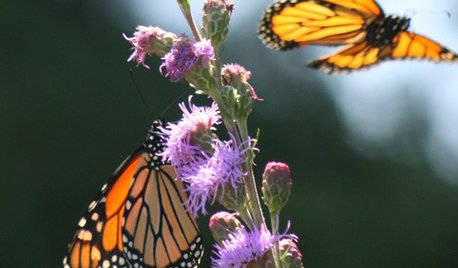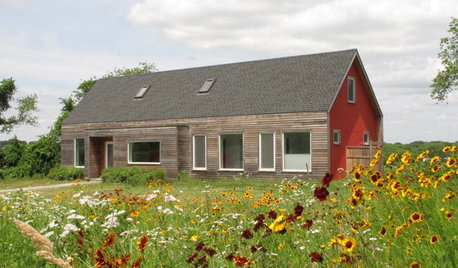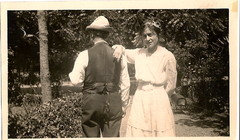Gardening starting with a meadow
Melissa Northern Italy zone 8
7 years ago
Featured Answer
Sort by:Oldest
Comments (18)
jacqueline9CA
7 years agoRelated Discussions
Question about starting a new shrub garden in a meadow
Comments (5)Sounds like Deer Heaven to me. I did this in the area around my leach field, but moved before it matured. I had all the trees and shrubs caged in wire or tree tubes and it wasn't a pretty sight. Hard to find things that the deer won't eat, but I was trying calycanthus, lindera, assorted cornus, sambucus and spirea (in case everything else got eaten!) plus the white oaks, the nyssa sylvatica and a sourwood....See More'Golden Meadows'...Good in the garden?
Comments (12)A real show-off first thing in spring but darkens quickly in my garden. I have it planted in a northern exposure under spruce trees, so it doesn't get a lot of sun. I would put it where it can be easily enjoyed but wouldn't make it the center of attention. It caught my attention at a nursery in spring. Had I seen it later in the season I probably wouldn't have bought it. It is pest resistant (slugs, earwigs, cutworms). All things said I haven't regretted buying mine. This my only picture taken on May 23 last spring....See Morestarting a meadow from plugs
Comments (6)Each species is different. Last year I started a number of plants from seed. Side oats grew into small plants and flowered. Royal catchfly just sat there as a small rosette of leaves the whole year. In contrast, I had yellow coneflower get quite big and flowers by late summer. Sky blue aster bloomed from plants that I started in February. Compass plant just gets a few leaves, the largest about 12" the first year. Bigger plants like compass plant, rattlesnake master, false wild indigo, leadplant, ect should be given 2 or 3 feet spacing minumum. If you mulch between plants and want them to stand out individually space them even more. On the other hand, keeping them close will produce a dense mass of roots that will stop weeds from invading....See Moretips on starting a new wildflower meadow?
Comments (6)If this mix is partially lawn and you're selling the house in a couple of years, I would for all practical purposes just leave it as lawn. I think the "Fleur de Lawn" people are just trying to market their product and sell you someting you really don't need and isn't practical. Besides, the fact that it's not native, many people would not be attracted to having clover in the lawn. They would see it as a weed that needs to be eliminated not to mention those with kids - clover stains set and are hard to get out in the wash if they're playing in it. And what are these low-growing flowers. If it's anything like what's in the cannister wildflower mixes they usually don't work out as many of them are annuals advertised as perennials and usually only linger for about a year before copping out. Plus, the clover is very aggressive and will choke pretty much anything out even other lawn grass. I'd say either stick with the lawn or make the commitment and go with a native mix. If you're craving color, why not add some colorful pots around the house, go crazy with the plantings. Plus, these you can take with you when you move and you don't have re-renovate to area to make it saleable....See Morejacqueline9CA
7 years agojacqueline9CA
7 years agoingrid_vc so. CA zone 9
7 years agoSheila z8a Rogue Valley OR
7 years agoSheila z8a Rogue Valley OR
7 years agoMelissa Northern Italy zone 8
7 years agolast modified: 7 years agojacqueline9CA
7 years agoingrid_vc so. CA zone 9
7 years agoUser
7 years agoSheila z8a Rogue Valley OR
7 years agoCurdle 10a (Australia)
7 years agolast modified: 7 years agoUser
7 years agoAlana8aSC
7 years agoMelissa Northern Italy zone 8
7 years agoKes Z 7a E Tn
7 years agoDavid_ in NSW Australia z8b/9a
7 years ago
Related Stories

GARDENING GUIDESHow to Stop Worrying and Start Loving Clay Soil
Clay has many more benefits than you might imagine
Full Story
GARDENING GUIDESGreat Design Plant: Meadow Blazing Star (Liatris Ligulistylis)
Make fast friends with the monarch butterflies and get a color show too with this adaptable U.S. Midwest native
Full Story
INSPIRING GARDENSWhat We Can Learn From Longwood Gardens’ New Meadow
Sustainability, ecology, native plant communities ... this public garden is brimming with lessons on horticulture for home gardeners
Full Story
PLANTING IDEASWant a More Colorful, Natural Garden? Try a Perennial Meadow
Spend less time tending and more time taking in the sights by improving on Victorian and prairie garden designs
Full Story
LANDSCAPE DESIGNHow to Design a Meadow Garden Everyone Will Love
Petite grasses or sedges plus flowers make for a manageable landscape that welcomes wildlife
Full Story
MOST POPULARHow to Start a Cool-Season Vegetable Garden
Late summer and late winter are good times to plan and plant cool-season crops like salad greens, spinach, beets, carrots and peas
Full Story
GARDENING AND LANDSCAPINGCitrus 101: Start Your Own Backyard Orchard
This Earth Day Weekend, Add Some Green, Style and Deliciousness to Your Landscape
Full Story
GARDENING GUIDESSeeds or Seedlings? How to Get Your Garden Started
Growing delicious herbs and vegetables starts with knowing your goals and when you want to plant
Full Story
GARDENING GUIDES6 Steps to Get a Garden Off to a Glowing Start
Grow a lush, balanced garden from an empty patch of yard or neglected landscape spot with these easy-to-follow guidelines
Full Story
GARDENING GUIDES10 Tips to Start a Garden — Can-Do Ideas for Beginners
Green up your landscape even if you're short on time, money and knowledge, with these manageable steps for first-time gardeners
Full Story






jacqueline9CA